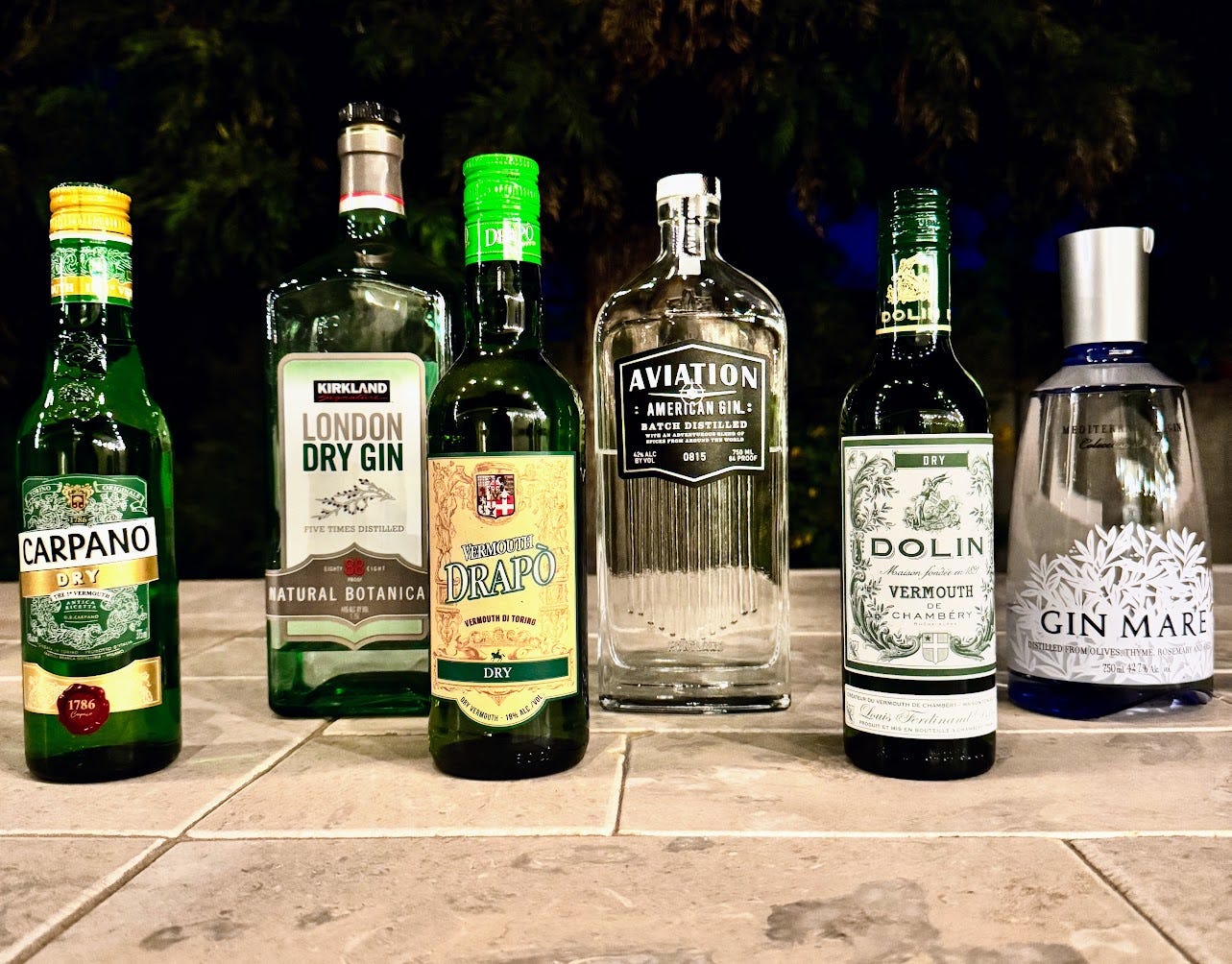The Martini Ratio
In the martini, it's not so much the ratio that matters but the resulting drink strength that yields the best result
For the most part, I think a “house recipe” should be simple. That’s because you’ll be making it a lot, and it should be something easily committed to memory. But, while I’d love for my house martini to be 2 parts gin and 1 part vermouth, that doesn’t actually work well most of the time. It usually yields a sweeter drink than I like, and I’ll dive into why later. So for this first house recipe, it’s going to be a bit more complicated.
First, some ground rules for the martini:
Ground Rules
Martinis contain both gin and dry vermouth. They are not made with vodka. They are not just diluted and chilled spirit
Martinis are dry and contain no added sugar beyond the vermouth
Martinis are stirred, not shaken (with apologies to Misters Fleming and Bond)
Martinis do not contain measurable amounts of other liquids (e.g. olive juice) - a Dirty Martini is a different cocktail entirely
Are all of these actually debatable? Yes. Are they up for debate for my house recipe? No they are not. If you want a drink that disagrees with these ground rules, don’t just order a martini - be specific!
The Math
Back to the ratio of gin and vermouth.
Most gin is ~44% alcohol, and most vermouth is ~18% alcohol. A basic 2-and-1 ratio that’s stirred well and diluted will yield ~3.8 ounces of drink at ~28% alcohol. That’s still quite stiff, but it doesn’t feel quite like a modern martini to me. Swap out a lower-proof gin like Aviation (42%), and now you’re down to ~27% in the finished product and even further from balance.
Potentially the piece of booze writing I think about most often is Dave Wondrich’s final edition of his column Half Full in which he details how and why the martini works and where its sweet spot lives. He gives a “safe” range for a dry martini of 28-32% ABV. The good news is that the standard, easy recipe gets you into that range with most mixes. The bad news is that I’m not all too interested in the lower range (or the upper range for that matter): my house martini is as close to 30% on the number as I can get.
I built a Google Sheet that you can copy for yourself to help calculate a martini’s ABV here using Dave’s formula. I thought about trying to make this extra-smart to where you just enter the gin and vermouth ABVs and the whole thing auto-calculates to give you 3 ounces of booze right at 30%, but that requires too much custom code for me right now. Maybe someday. Still, I hope the tool helps :)
The Lineup
The details of each are for a later post, but here are the contenders for the house recipe martini all lined up (minus one, whoops):
Gins:
Kirkland London Dry - large format super-budget
Aviation - standard “well”
Gin Mare - upper-shelf, highly botanical
Vermouths (all widely available as half-bottles):
Martini
Carpano
Drapo
Dolin
Since each is a slightly-different ABV, each permutation of the potential house martini will be made with a slightly-different ratio. But, on average, the gin ABV I’m working with is 43% and the vermouth is 18%. That means the “standard” recipe for my house martini is 2.33 ounces of gin and 0.67 ounces of vermouth.
Next Steps
First, I’m going to detail my “additions” that will be consistent across all contenders - the presence (or absence) of orange bitters and the garnish.
Then, I’ll talk a bit about each vermouth and how they each compare on their own.
Next, I’m going to make all 12 possible martinis and detail them in a deep-dive post dedicated against each gin (so 3 posts).
Finally, I’ll choose a single gin and vermouth combination as the house martini, and we’ll move on to the next cocktail.
That’s 5 more martini posts coming your way over the next ~6 weeks. I hope you’ll enjoy following along and pass this along to whoever else you think might find it fun!


